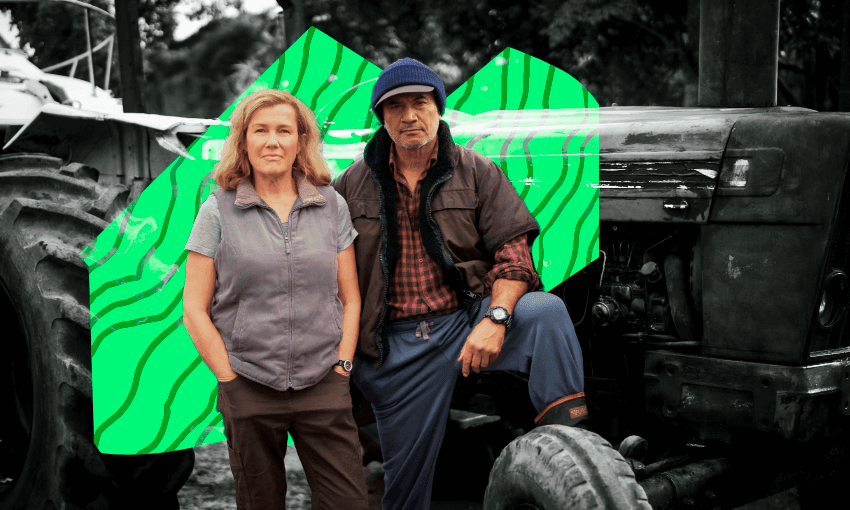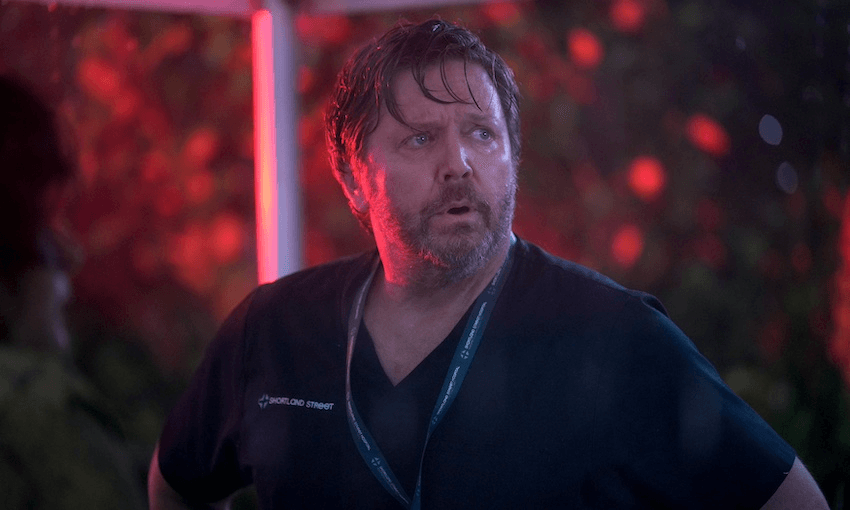Far North creator David White tells Tara Ward why his new television drama is stranger than fiction.
Director and writer David White knows an amazing yarn when he hears one. Back in 2016, White stumbled across an article about what was then New Zealand’s biggest drug bust, and sensed there might be more to the story. “As a documaker and as a consumer of news, you sort of go, ‘hey, this story doesn’t quite add up’,” White (This Town, Meat) remembers. He dug further into the case, discovered the involvement of Northland locals Heather and Ed, and jumped in the car. “I drove to Ahipara and found the couple and I just knocked on the door,” White says.
After two hours of talking to Ed, White offered to buy the life rights to the story on the spot. It’s a tale that has it all: an international drug-smuggling ring, an inept gang of criminals, a record amount of methamphetamine and two unassuming locals who bring the whole thing down. These events inspired White to write new Three drama Far North, and while the show is “mostly” based on a true story, White says much of the action plays out exactly as it did in real life. “When I was researching it, some days I would just go, ‘sorry, what did I just read?’” he says.
“The reality of what was happening and what they were doing to get these drugs, and the way the real life Ed told me the story, I was like ‘this was so unbelievable’.”
Tonight, viewers will see how unbelievable the story really is. Episode one sees a boat arrive from Hong Kong carrying 500kg of meth, only to break down off Te-Oneroa-a-Tōhē Ninety Mile Beach, stranding its Chinese crew at sea. On land, a hapless criminal gang scrambles to bring the drugs ashore, but their ongoing incompetence draws the attention of Northland locals, including Heather (Robyn Malcolm) and Ed (Temuera Morrison). Later, after kindly helping the strangers launch their boat off the dangerous west coast, Heather and Ed slowly realise that something much bigger – and much dodgier – is taking place in their town.
White moved to Ahipara while he wrote the screenplay, embedding himself in the community and becoming close friends with the real Heather and Ed. As a documentary maker, White understands that it takes time for people to trust someone else with their story. “I spent a long time walking up and down the beach with the real life Heather and her dogs, talking about the world. It was a dream in that respect,” he says. “Heather and Ed are so beautiful and down to earth and lovely and caring. Tem and Robyn have done a great job portraying them.
Morrison and Malcolm bring warmth and relatability to the roles of the salt-of-the-earth mechanic and his aqua-aerobics instructor wife, who unwillingly become entangled in one of New Zealand’s most bewildering crimes. It’s a small-screen reunion for the pair who first starred together in Shortland Street during the 1990s, and White says both actors threw themselves into their roles. “Tem might be Boba Fett, but he was on that tractor, he did all his own stunts,” he says. “Both of them launched the boats in episode one. They got stuck in and had a real ball.”
With a story this mind-blowing and an acting duo that iconic, White says he had big ambitions for Far North to be a premium drama that was large in scale. Production took place in Northland, Hawke’s Bay and Auckland over two months, and includes storylines that feature Chinese actors speaking in Mandarin. White co-wrote and co-directed the show with Mingjian Cui (Inked) and Suli Moa (The Panthers), and he’s thrilled that Far North will be bringing Chinese language to New Zealand television in a primetime slot.
With the show soon to screen in both Australia and the United States, White says he was never interested in making just “another meth story” about Northland, but rather wanted Far North to tell the tale of a community banding together. Coupled with the dark Kiwi humour that has gained international respect in recent years, Far North will resonate with viewers around the world, White reckons. “This story happened in Ahipara, but because of the globalness of that drug trade, it really could have happened anywhere,” White says.
Far North wants us to think about what we’d do if we ever found ourselves in Heather and Ed’s situation – but above all else, it remains an amazing yarn. “I hope everyone has fun watching it, because it is insane,” White says. “It’s so crazy, and it only gets crazier.”
Far North screens on Mondays at 8.30pm on Three and streams on ThreeNow.



